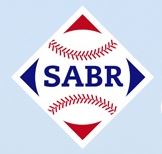![[George Sisler, University of Michigan (baseball)] (LOC) by The Library of Congress George sisler photo](https://baseballroundtable.com/wp-content/uploads/2016/09/3295492634_9c3a9ce46c_m_George-sisler.jpg)
George Sislet – College All American Photo by The Library of Congress
On that particular day, however, Sisler got the better of Walter ”Big Train” Johnson – pitching a six-hit (two walks versus six strikeouts), complete-game shutout, as the Browns prevailed 1-0. The game was significant for a handful of reasons: 1) It was Sisler’s only complete-game shutout; 2) It was Sislet’s last ever major-league pitching victory (He finished his career 5-6, three saves, 2.35 ERA in 12 starts and a total of 24 appearances); 3) It was Sisler’s second victory over Johnson; he had topped the Big Train 2-1 as a rookie the previous season; 4) Sisler was batting third in the order; 5) Despite his losing career record on the mound, Sisler would earn his way into the Baseball Hall of Fame (after amassing 2,812 hits and a .340 batting average over 15 seasons).
At any rate, Sisler’s pitching performance of a century ago (he went zero-for-four at the plate), led BBRT to take a look at his remarkable career.
Sisler was a gifted athlete and, at least for his times, a scholar among baseball players. He was an exceptional student in high school, as well as an end on the football team, a forward on the basketball team and a pitcher on the baseball squad. He attended the University of Michigan and earned not only three letters in baseball (1913-14-15) and two-time All-American recognition, but also a degree in Mechanical Engineering.
Sisler, who primarily pitched and played outfield for Michigan (where he was not only a quality pitcher, but a fleet defender and solid hitter – batting over .400 for his college career), joined the St. Louis Browns as a pitcher in 1915, going 4-4, 2.83 in 15 games; tossing six complete games in eight starts. The Browns also appreciated Sisler’s bat and athletic defense, and he saw considerable time at first base and in the outfield. He hit .285-3-29, with ten stolen bases in 81 games. And, the best was yet to come. Sisler, switching primarily to first base in 1916, went on to play 14 more seasons – earning praise for hit bat and his glove. In that time, he won two batting titles (.407 in 1920 and .420 in 1922). He also led the league in stolen bases four times (a high of 51 in 1922); triples twice; runs scored once; and base hits twice. (In fact, his 257 hits in 1920 stood as the MLB record until Ichiro Suzuki collected 262 safeties in 2004.) Sisler was also the American League MVP in 1922. Despite this stardom, Sisler was known as a modest individual and true gentleman on an off the field.
His final career stat line was .340-102-1,178, with 2,812 hits, 1,284 runs scored, 425 doubles, 164 triples and 375 stolen bases. AND, it might have been even better. Sisler missed the entire 1923 season with a severe sinus infection that resulted in chronic headaches and vision problems. Although he returned to action in 1924, his batting eye was never quite the same. (He went from his .420 average in 1922 to .305 in 1924; and hit .361 before the infection and .320 after). He still, however, managed to hit over .300 in all but one of his remaining seven seasons.
“Gentleman George” Sisler was truly one of the greats to play the game.
For those who track such things: Sisler also had two sons who played in the major leagues: Dave Sisler (RHP, 1956-62, Red Sox/Tigers/Senators/Reds) and Dick Sisler (1B/OF, 1946-53, Cardinals/Phillies/Reds).
I tweet baseball @DavidBBRT
Member: Soceity for American Baseball Research (SABR); The Baseball Reliquary; Baseball Bloggers Alliance.
Photo by The Library of Congress





